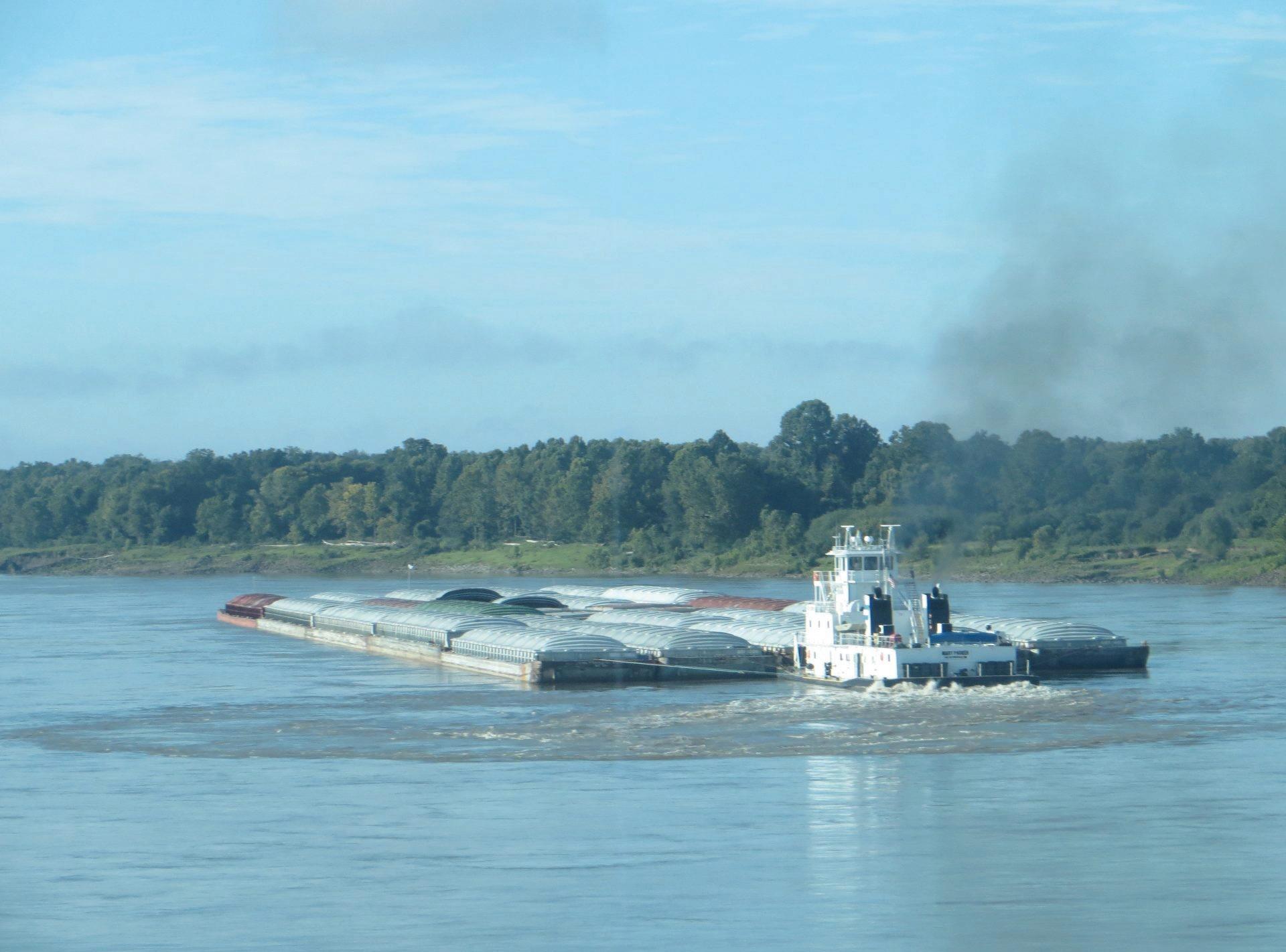
7 minute read
Effectively Managing the Nation’s Water Resources
MODERNIZING WATER INFRASTRUCTURE – INSTITUTE FOR WATER RESOURCES
BY COL. JOE MANOUS JR., PH.D., USA (RET.), PAUL GAGNON, PH.D., AND MICHELLE HILLEARY, PH.D.
The effective management of water resources is an inherently human challenge. There is still no substitute for water in its most important uses. And while water is essential as a resource, it is unevenly distributed, difficult to capture, movable only at great cost, highly variable in availability, susceptible to pollution, and liable to spread illness. Managing our water resources requires strong organization and resourcing.
Challenges from floods, drought, and pollution threaten our water resources. Rising demand from agriculture, industry, navigation, and human consumption, in conjunction with changes in climate, land use, and populations, has created stress in areas where water was historically abundant.

The Institute for Water Resources provides the U.S. Army Corps of Engineers and the United States with comprehensive support for the management of water resources and the sustainment of the nation’s economic status through modern analysis, unique methods and models, and data management.
COURTESY IMAGE, U.S. ARMY CORPS OF ENGINEERS, INSTITUTE FOR WATER RESOURCES
Differing surface water rights between eastern and western states also can lead to issues. The Institute for Water Resources (IWR), as a field operating activity of the U.S. Army Corps of Engineers (USACE), helps support these water planning and management challenges through a diverse set of responsibilities. IWR provides overarching analysis of water resources trends and issues; development, distribution, usage, and training of methods and models for planning, operations, and engineering; and data management of program and project information on a national scale.
ANALYZING TRENDS
To support USACE’s modern Civil Works mission, IWR oversees seven unique centers committed to providing forward-looking analysis, cutting-edge methodologies, and innovative tools.
Economic analysis and planning.
Economics and planning make up a core focus of IWR’s Water Resources Center. Recent studies it has published address cost variation associated with incremental funding of large Civil Works projects (“Evaluation of Impacts Associated with Delay or Deferment of Civil Works Funding”), and the impact of outflows from Lake Ontario on commercial navigation (“Economic Impact Assessment of Halting Commercial Navigation on the Montreal-to-Lake Ontario Section of the St. Lawrence Seaway”). Among its other priority areas, the center is supporting the Justice40 initiative to advance environmental justice and spur economic opportunity in disadvantaged communities. This includes recent work evaluating rapid assessment tools for identifying vulnerable populations in planning studies.

A recent effort by the Institute for Water Resources centered on analyzing the economic effect of deepening the Mississippi River channel.
COURTESY IMAGE, U.S. ARMY CORPS OF ENGINEERS, INSTITUTE OF WATER RESOURCES
Enabling advancements internationally.
The International Center for Integrated Water Resources Management incubates collaboration that taps into expertise on emerging issues. Recent initiatives include support for rainfall estimation measurements and African flood and drought monitors. Practitioners use these tools to study drought adaptation, stunting of childhood growth, human migration, livestock parasites, and malaria and cholera transmission. In 2018, along with UNESCO, the center co-published a guide to climate risk-informed decision analysis – a bottom-up, risk-based framework for resilient water resources planning that has been applied in countries as diverse as Zambia, Chile, Thailand, Sri Lanka, and the United States.
Coordinating public engagement.
The Collaboration and Public Participation Center of Expertise supports public engagement on Civil Works projects, such as when the USACE New Orleans District requested assistance in engaging the local community for the Inner Harbor Navigation Canal. Additionally, the center worked with the Udall Foundation and contractors to identify and assess stakeholders to improve the Columbia River Treaty process between the United States and Canada, and in 2020, joined with the Water Resources Center to publish “Strengthening USACE Collaboration with Tribal Nations for Water Resources Management,” which offered improved collaboration strategies to address water resources challenges that tribal nations confront.
METHODS AND MODELS
More populations at risk of floods means that advancing hydraulic and hydrologic modeling capabilities with increased resolution, greater accuracy, and faster computation is increasingly important. To meet this expanding challenge, hydraulic and hydrologic modeling has grown more robust alongside improvements in computational power, terrain data availability, and weather forecasting. IWR delivers such expertise and solutions to benefit communities nationwide through two of its technical centers.
Mitigating day-to-day risks.
The Hydrologic Engineering Center provides valuable software to address surface water, riverine systems, sedimentation, and reservoirs. Results from this software suite are publicly available from USACE’s Access to Water at no cost. The River Analysis System allows the modeling of open channel flow and provides 2D spatially distributed wind and rainfall modeling, 2D sediment transport, and mud and debris flows. Practitioners have applied the River Analysis System to examine outcomes, from the failure of the Brumadinho mine tailing dam in Brazil to post-wildfire flood inundation in Santa Barbara, California. Additional modeling tools supported by the Hydrologic Engineering Center include the Hydrologic Modeling System, a precipitation-runoff tool that simulates complete hydrologic processes of dendritic watershed systems; the Ecosystem Functions Model, which combines hydrology and ecosystems information to elucidate ecological conditions and identify restoration opportunities; and the Army Corps of Engineers Water Management System, a USACE-specific hydrologic, hydraulic, and consequence suite of modeling tools that provides real-time forecasting to inform water resources management. Public versions of this software are available at no cost.
Prioritizing dam and levee safety.
Flood risk is not the only water-related threat facing our population. The U.S. economy and the health and safety of its citizens depend on USACE effectively managing, monitoring, and assessing risk across a vast dam and levee system. The National Inventory of Dams, a congressionally authorized database of around 91,000 dams across the nation, is a key tool that emergency managers, safety professionals, community leaders, and residents use to identify persons and structures at risk – enabling people to take life-saving actions before a dam-related incident. Recently, IWR’s Risk Management Center collaborated with the Nuclear Regulatory Commission to produce all-new flood hazard curves that incorporated a formal Nuclear Regulatory Report and joint probabilities of dam breaches. The center’s risk modeling software, LifeSim 2.0, is capable of producing high-resolution inundation probabilities, and recent updates incorporate building stability, more accurate traffic simulation, and more robust understanding of fatality rates. It is also publicly available at no cost.
OPERATIONALIZING DATA
Supporting the Civil Works mission in the 21st century requires putting data in the hands of decision-makers and making it actionable. Data should reside in a standardized, cloudsmart, user-friendly format within a cyber-secure environment. Civil Works Business Intelligence (CWBI), in coordination with IWR’s Navigation and Civil Works Decision Support Center, has developed a strategic portfolio of management data and enterprise information technology investments. CWBI leverages cloud-native technology to promote innovation and enhanced visualization of data. The portfolio comprises interoperable databases and more than 125 modular applications organized into Civil Works business lines such as navigation and flood risk management. The center also curates data on the characteristics, performance, and use of the nation’s navigation infrastructure systems, supporting waterborne commerce and associated investment and operation decisions that underpin regional and national economies.
[CONTINUED BELOW]

WWW.CASHMANDREDGING.COM
(ADVERTISEMENT)
Meanwhile, IWR’s Waterborne Commerce Statistics Center collects and disseminates information about the movements of goods and commodities on inland waterways and through U.S. ports, supporting and enabling the operation of America’s waterways and supply chains. This data, for instance, was recently combined with IWR’s HarborSym Model to analyze the economic effects of deepening the Mississippi River ship channel.
SUPPORTING ECONOMIC GROWTH
Since 1824, USACE Civil Works has supported the economic growth of the nation while providing services and engineering that protect public health, safety, and welfare.
As it confronted historic challenges over the years, the program has evolved and adopted to continuously meet the mission.
Success today requires innovative, accessible technologies, and management capabilities with a focus on the human element. New approaches, products, programs, and activities are evidence of the comprehensive support for water resource management that IWR provides in meeting these challenges.

GET THE UPCOMING PRINT EDITION DELIVERED TO YOUR HOME OR OFFICE FOR FREE.
GO TO AMERICAS-ENGINEERS.COM/PRINT-SUBSCRIBE/










